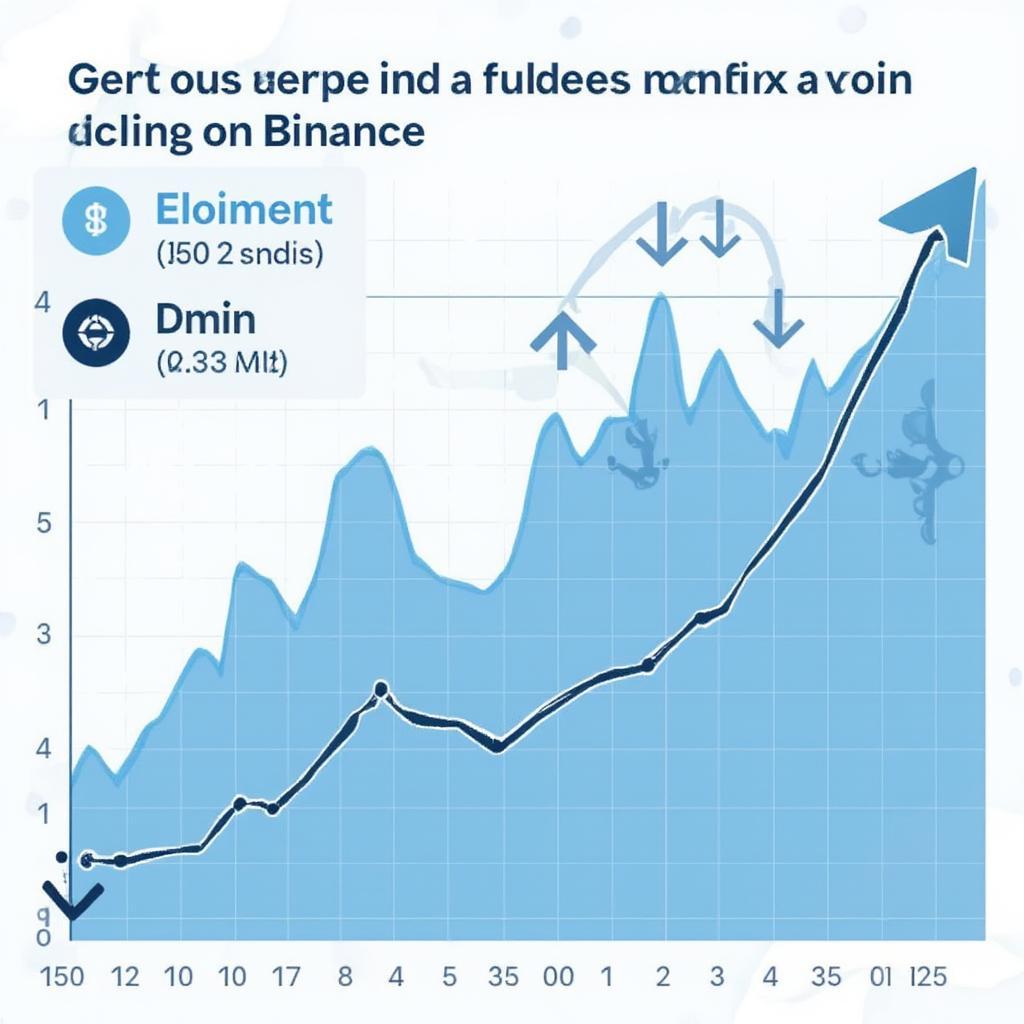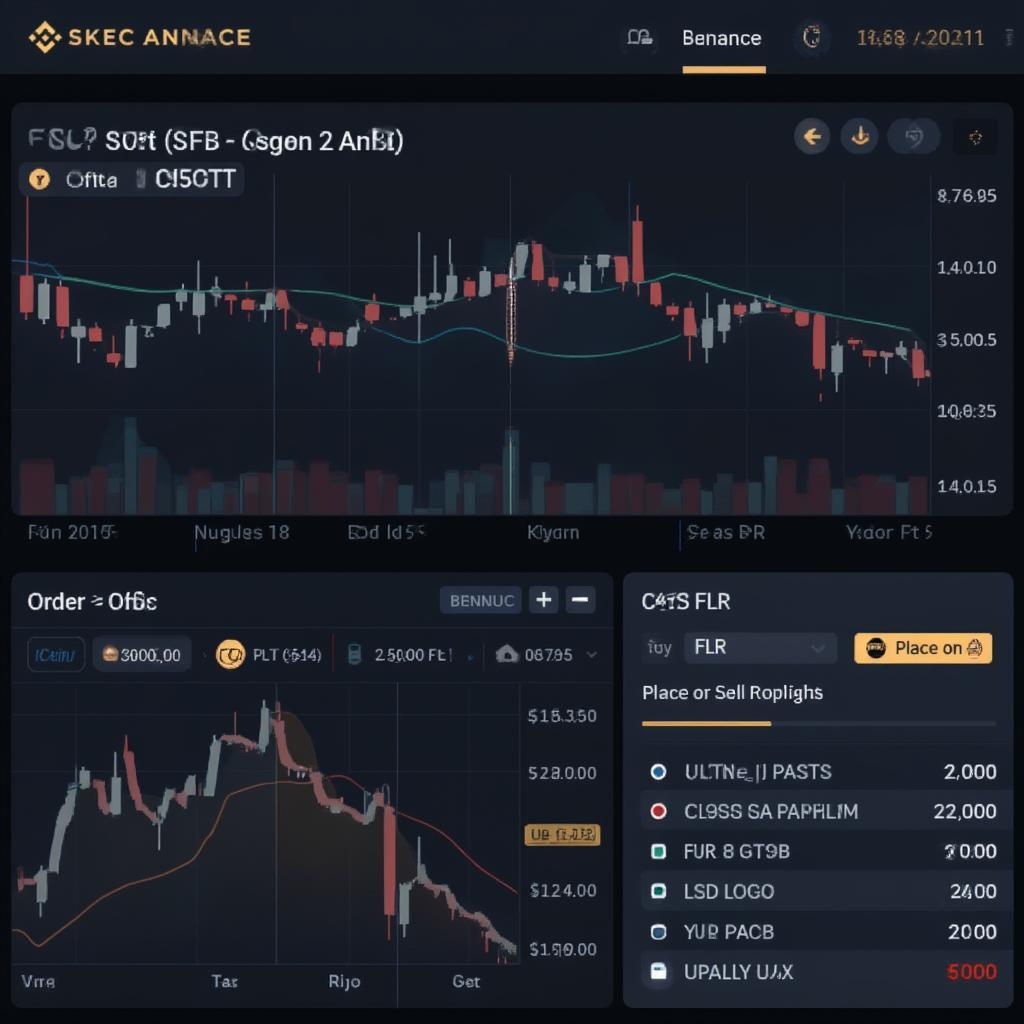Silvergate Binance: Navigating the Crypto Exchange Landscape After Silvergate’s Fall

The crypto world has been turbulent, and the fallout from Silvergate Capital’s collapse sent ripples throughout the industry. One of the major questions on many minds is the impact on Binance, one of the world’s largest cryptocurrency exchanges. This article will delve into the complex relationship between Silvergate and Binance, and explore the broader implications for crypto investors and the future of digital asset trading. We’ll unravel what happened, the immediate consequences, and what the future might hold, providing clarity for those trying to navigate this uncertain landscape.
Understanding Silvergate’s Role in the Crypto Ecosystem
Silvergate Bank wasn’t your typical financial institution; it was a crucial bridge between the traditional banking system and the burgeoning world of cryptocurrency. Think of it as a specialized gateway, allowing crypto companies to move funds more easily, thus enabling the smooth functioning of the digital asset ecosystem. They offered a unique platform, the Silvergate Exchange Network (SEN), which facilitated real-time USD transfers between crypto exchanges and institutional investors. This system was instrumental in enhancing liquidity and operational efficiency within the crypto market, and in essence, Silvergate acted as a central hub for many prominent players.
The Downfall of Silvergate
Unfortunately, this crucial bridge faced a dramatic collapse. The decline of Silvergate wasn’t sudden; it was a slow burn, fueled by a combination of factors. Crypto market downturns, increased scrutiny from regulators, and most significantly, the fallout from the FTX collapse, all contributed to the bank’s demise. Silvergate’s heavy reliance on crypto deposits, without a comparable portfolio of loans, proved to be its Achilles’ heel when the crypto market began to falter. When the bank was forced to liquidate assets to meet withdrawal requests from customers, the dominoes started to fall. This highlighted the fragility of the financial infrastructure supporting the crypto industry and raised alarms about risk management in institutions closely intertwined with crypto assets.
Binance and Silvergate: A Key Relationship
Binance, being a major player in the crypto exchange space, had a well-established relationship with Silvergate. The SEN network that Silvergate provided was essential for Binance to facilitate its USD transfers. This made the relationship a foundational one, impacting not only Binance’s internal operations but also its interaction with a significant portion of its user base dealing with US dollars. When Silvergate’s troubles began, the implications for Binance were substantial. The disruption caused a chain of events that made it necessary for Binance to adapt quickly to maintain its operational efficiency and maintain the confidence of its users.
The Immediate Impacts of Silvergate’s Collapse on Binance
With Silvergate’s demise, Binance had to quickly find new solutions for processing USD transactions. This disruption led to several immediate impacts:
- Temporary Processing Delays: Users experienced temporary delays in processing their USD withdrawals and deposits.
- Search for Alternative Banking Partners: Binance had to actively search and establish relationships with new banking partners capable of handling the high volume of transactions they process daily.
- Increased Operational Costs: Transitioning to new banking partners and establishing new infrastructure likely resulted in higher operational costs.
- Loss of SEN benefits: Binance no longer benefited from the Silvergate Exchange Network, impacting real-time transactions.
- Reputational Damage: Although not directly responsible for Silvergate’s collapse, the disruption did cause some reputational damage as customers experienced service disruptions.

This situation underscores the interconnected nature of the crypto industry, where the downfall of one player can have cascading effects on others. The ability of Binance to adjust quickly and maintain business continuity during such a turbulent time became extremely important in building confidence amongst its users.
How Binance Adjusted to Silvergate’s Demise
Faced with the collapse of a key partner, Binance didn’t sit idly. The exchange swiftly initiated a multi-pronged strategy to mitigate the impact and ensure continuity of its services. Key actions included:
- Establishing New Banking Relationships: Binance actively sought out and secured relationships with multiple banking partners, diversifying its banking infrastructure to avoid relying on a single point of failure. This reduced exposure to potential future problems.
- Optimizing Transaction Processes: Binance streamlined internal processes and worked closely with its new banking partners to minimize delays in USD deposits and withdrawals. This involved optimizing its payment gateways and communication with its user base.
- Enhanced Transparency: Binance communicated transparently with its users regarding the situation and the steps it was taking to address the issues. Clear updates and timelines were essential to maintaining trust during the transition.
- Explore Alternative Payment Methods: In addition to traditional banking channels, Binance explored other alternative payment solutions and stablecoin integrations to enhance user flexibility and diversify the ways users could fund accounts.
- Risk Management Enhancement: Binance reviewed and further enhanced its internal risk management strategies in light of the Silvergate experience. They are continually trying to learn from these events, improving their financial models to proactively manage such risk.
These actions helped Binance navigate a very difficult situation, demonstrating the resilience of the crypto exchange when confronted with unexpected challenges.
“The Silvergate situation was a wakeup call for the entire crypto industry. It highlighted the importance of diversification and robust risk management. Binance’s response was commendable; they quickly adapted and showed that they could handle extreme situations.” – Dr. Evelyn Reed, Financial Technology Analyst.
Long-Term Implications for Binance and the Crypto Industry
The collapse of Silvergate served as a powerful reminder of the risks inherent in the crypto ecosystem, and what happens when a key infrastructure provider falters. The relationship between Binance and Silvergate, in particular, has highlighted several long-term implications for the crypto exchange and the broader industry:
- Increased Regulatory Scrutiny: The situation has intensified the calls for tighter regulations in the crypto sector. Financial institutions that interact with digital assets will face closer scrutiny, requiring them to adhere to more strict guidelines to ensure stability and user protection.
- The Need for Diversification: Crypto exchanges now understand the critical importance of diversifying banking partners. Relying on a single or even limited number of institutions is a massive risk.
- Focus on Robust Risk Management: Risk management is now a higher priority within crypto firms. They are learning the lessons and adapting their procedures to avoid becoming reliant on fragile systems.
- Greater Emphasis on Stablecoins: The volatility of the crypto market and traditional banking systems has pushed the use of stablecoins for payments and transactions.
- Decentralization of the Banking System: The events have given credence to the argument that the traditional banking infrastructure may not be best suited for digital assets, further pushing for greater innovation within the crypto ecosystem and the decentralization of financial services.

This event may just end up making the crypto world stronger and more stable. This might seem counterintuitive, but these types of events reveal cracks that can be fixed. The industry is now looking for solutions so things like this don’t happen again.
“The Silvergate situation, while disruptive, acted as a catalyst. It forced the crypto space to reassess its vulnerabilities and become more resilient in the long run. Binance’s response was a testament to the industry’s capacity to adapt and evolve.” – Mr. David Chen, Blockchain Technology Consultant
What Should Crypto Investors Do?
So, what can crypto investors learn from this? Here are some key takeaways for navigating the crypto market in this evolving environment:
- Stay Informed: Keep up with the latest news and developments in the crypto space, as well as the broader financial world. Knowledge is your best defense.
- Diversify Your Holdings: Don’t put all your eggs in one basket. Diversify your portfolio across different cryptocurrencies, stablecoins, and even traditional assets.
- Use Reputable Exchanges: Do your research and use well-established and regulated exchanges. Consider those with a solid history of customer service and transparency.
- Be Aware of Risk: Recognize that crypto investments carry significant risks. Don’t invest more than you can afford to lose, and do your homework before putting funds into any project.
- Be Patient: Don’t make rash decisions based on short-term market swings. Think long-term, and consider the potential of this asset class to grow.
- Understand the Infrastructure: Take a closer look at the banking and payment systems that underpin crypto exchanges. This helps to make better informed decisions.
- Look for Transparency: Choose exchanges that are transparent about their operations, partnerships, and finances.
- Use Security Best Practices: Make sure your passwords are secure, use two-factor authentication, and use hardware wallets to secure your digital assets.
By understanding both the risks and opportunities, investors can navigate this volatile market with more confidence.

Conclusion: Navigating the Post-Silvergate Landscape
The collapse of Silvergate Capital was a significant event that shook the crypto industry, revealing vulnerabilities in the interconnected financial ecosystem. While Binance faced initial challenges, the exchange successfully navigated through these turbulent waters, demonstrating its resilience and ability to adapt. The implications, however, are long-lasting, prompting increased regulatory scrutiny, a demand for more diversification, and a greater emphasis on robust risk management practices within the crypto sphere. For crypto investors, the key lesson is clear: stay informed, diversify your holdings, and be aware of the risks involved. As the crypto industry continues to evolve, understanding the lessons from events like Silvergate’s downfall is paramount to achieving financial security and navigating the future of digital assets effectively. The future of Silvergate Binance and the entire crypto sphere depends on its ability to learn from past mistakes and build a more sustainable ecosystem.
Frequently Asked Questions (FAQ)
1. How did Silvergate’s collapse affect Binance’s operations?
The collapse of Silvergate forced Binance to find new banking partners, which led to temporary delays in USD deposits and withdrawals, higher operational costs, and loss of the Silvergate Exchange Network’s real-time processing benefits.
2. What steps did Binance take to address the disruption caused by Silvergate’s failure?
Binance established new banking relationships, optimized transaction processes, increased transparency with its users, explored alternative payment methods, and enhanced internal risk management.
3. What are the long-term implications of the Silvergate situation for the crypto industry?
The collapse highlights the need for increased regulatory scrutiny, diversification of banking partners, robust risk management, greater adoption of stablecoins, and a potential push towards decentralized financial solutions.
4. What should crypto investors do in light of the Silvergate situation?
Crypto investors should stay informed, diversify their holdings, use reputable exchanges, be aware of the risks, be patient, and understand the underlying infrastructure of exchanges.
5. What is the Silvergate Exchange Network (SEN) and why was it important?
The Silvergate Exchange Network was a platform that facilitated real-time USD transfers between crypto exchanges and institutional investors, significantly enhancing liquidity and efficiency within the crypto market.
6. Has Binance been able to completely recover from the Silvergate impact?
While the immediate disruption was significant, Binance has made strides in establishing new partnerships and optimizing their processes. While the effects are still in the market, their quick response has helped maintain stability.
7. Will regulators react more strongly to these events in the crypto space?
Yes, the situation has made it clear that regulatory scrutiny is set to increase significantly to ensure the stability of the crypto market and protect investors from potential future disruptions.




